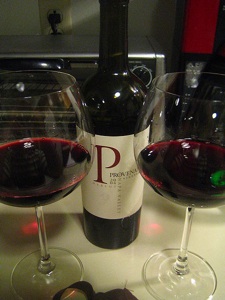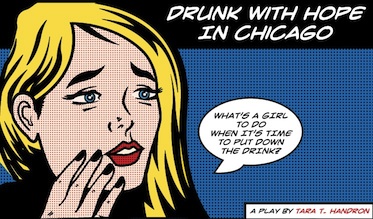
I was recently invited by Caren Osten Gerszberg and Leah Odze Epstein who write and compile the fun blog, “Drinking Diaries” to contribute my two-cents on where I am with the whole drinking thing. Check out the other interesting pieces at www.drinkingdiaries.com.
It’s been 20 years since I used vodka like aspirin–to numb my pain. In fact, I’ve been sober 17 years more than I drank, since I quit before I was old enough to buy the stuff. So my brain should be used to ordering Perrier with lime and shaking my head politely as the merlot bottle comes my way. I should be so used to drinking non-alcoholic beverages at cocktail hours that I don’t give alcohol a second thought.
But the truth is that ex-drunks need to stay in recovery their whole lives. Like cancer survivors, they live in a state of remission, where they humbly acknowledge that their illness is impatiently waiting for a moment of vulnerability to make a surprise visit.
And that surprise visit may not even involve alcohol.
The face of addiction morphs into different beasts. Mine does so with the election of every new US president. Just when I think I’ve learned how to fill my jiggly center with prayer and meditation, with the love of my family and friends, I get that undeniable ache and reach once more for something to “complete me” as Jerry Maguire would say.
Addicts do that.
Why?
Craig Nakken, author of “The Addictive Personality” explains:
Addiction is a process of buying into false and empty promises: the false promise of relief, the false promise of emotional security, the false sense of fulfillment, and the false sense of intimacy with the world….Like any other major illness, addiction is an experience that changes people in permanent ways. That is why it’s so important that people in recovery attend Twelve Step and other self-help meetings on a regular basis; the addictive logic remains deep inside of them and looks for an opportunity to reassert itself in the same or in a different form.
That means that even though I only drank for three years, I will forever have a “thinking problem” that, if I’m not careful, could dump a bunch of unwanted pain unto my lap. It means that as I form important relationships, that I need always remember my propensity to mix up intensity with intimacy–that the rush I feel from scoring 100 followers on Twitter can in no way replace the intimacy I share with my husband and kids–that even though it feels like a high profile career can provide a world of glitter that won’t bore or disappoint me, that any accolade that I win is going to be a fleeting and unreliable high, and should not be depended on.
Intensity is not the same thing as intimacy.
Nakken repeats that logic several times in his book. “The addict has an intense experience and believes it is a moment of intimacy,” he writes.
It’s only been in the last two years of my recovery from, well, just about everything, that I’ve come to appreciate that mistake. I suppose part of my brain is programmed to pursue the thrill, no matter how many people I hurt (myself included) to get it. I chase the adrenaline rush, the dopamine high, that is akin to the buzz I get from smoking an entire cigarette in three puffs after staying away from lung rockets for a year or more. It treats my bruised insides the same way Kids’ Tylenol does my son’s leg cramps. The addictive object dulls the blunt emotions with which I experience most of life.
To continue reading, click here.
* Click here to subscribe to Beyond Blue! And click here to follow Therese on Twitter. And click here to join Group Beyond Blue, a depression support group. Now stop clicking.

